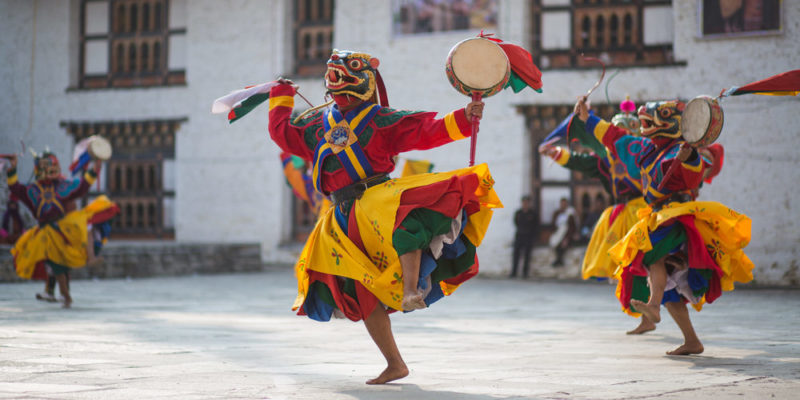We explain what folklore is and what its main characteristics are. Also, the types of folklore that exist and more.
What is folklore?
Folklore is the set of customs and traditions that belong to and identify a culture . It is a flexible and broad concept that refers to the expression of cultural traditions that are transmitted from generation to generation, such as literature , art , history , myths , festivities, among others.The word folklore was designated by the archaeologist William Thoms in 1846 , to refer to what in England were called popular antiquities. The term folklore comes from the English folk, which means "people" and lore, which means "knowledge."
From the denomination of folklore, the knowledge of a population that is transmitted in different ways through time was contemplated . Folklore is different for each nation, so it establishes an identity for each population.
Folklore characteristics
Folklore is characterized by being:
- The set of traditional knowledge of a people.
- The identity of a nation that differentiates it from the others.
- An anthropological reconstruction of culture , that is, of social expressions, customs, beliefs and physical or material aspects, such as art.
- The unwritten science about various human cultures, passed down from generation to generation.
- A route of transmission of historical situations of a certain social group, which can be maintained for several generations, through art, literature, sculpture and music .
- Old, in the sense that it drags or maintains current ideas and events from the past.
- Empirical, that is, based on beliefs and experiences and not on logical or scientific arguments.
The science of folklore

- The village. It consists of identifying the diversity of populations that make up the same nation, such as rural, peasant, indigenous peoples, urban, among others.
- The tradition. It consists of the ways of speaking, of dressing, of relating, the beliefs and customs of each population that make up the same nation that, despite their differences, maintain common aspects that give it identity.
- The identity. It consists of the set of traits and customs that last from generation to generation and that allow us to recognize a social group as such, different from the others. Like national songs, religious rites and festive dates.
Tradition and modernization

For example, a population that consumed certain traditional locally produced foods decreased their production due to economic and trade changes that incorporated new food products that compete with traditional ones. Over time, the consumption and production of traditional foods declines for generations to come.
Types of folklore
Folklore is classified into three main types:
- Material folklore. It refers to the physical objects that identify a culture, such as crafts, works of art or architecture .
- Verbal folklore. It refers to the sayings, expressions, songs, narrated stories or fables that are transmitted from generation to generation.
- Folklore by customs. It refers to the various habits, such as clothing, cooking, leisure activities and popular art, which are adopted because they have been practiced since ancient times, although they are not the most practical habits today.
The above content published at Collaborative Research Group is for informational and educational purposes only and has been developed by referring reliable sources and recommendations from technology experts. We do not have any contact with official entities nor do we intend to replace the information that they emit.
Veronica is a culture reporter at Collaborative Research Group, where she writes about food, fitness, weird stuff on the internet, and, well, just about anything else. She has also covered technology news and has a penchant for smartphone stories. .
Leave a reply
Your email address will not be published. Required fields are marked *Recent post

Sport: What Is It, Types, Risks, Features, Characteristics and Examples
September 23, 2021

Dogs: Emergence, Features, Characteristics, Feeding and Breeds
September 24, 2021

Story: Definition, Elements, Structure, Features and Characteristics
September 24, 2021

Essay: Definition, Structure, Features, Characteristics, How to Do It
September 24, 2021
